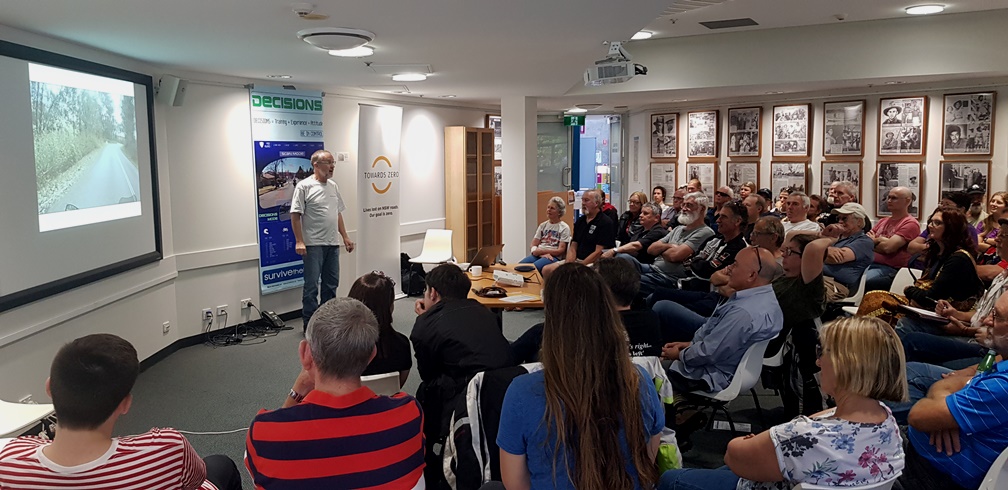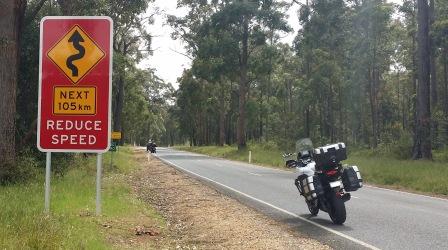Using your brakes properly is a skill like any other – it can be learned. And it’s worth learning. No matter how carefully you ride, there will be times when you’ll need to brake really hard.
One ambulance ride in four could have been prevented if the motorcycle rider had braked properly. Sure, many ambulance rides could also have been prevented if drivers used their eyes, but it’s no good being right if you’re also in the ambulance.
Set Up and Squeeze
The front and rear brakes do different things in an emergency. The front brake will stop the bike and the rear brake steadies the bike and prevents it getting out of line. But you can’t just grab the brakes because they will lock up.
When you Set Up the brakes the weight is transferred to the front wheel and the grip is increased. When the bars are straight, by Squeezing the front brake progressively you take advantage of the increased grip and you stop quickly without skidding. Meanwhile the weight on the rear wheel is reduced so you can only use a little pressure on the rear brake to avoid a lock up.
Good grip on the road is critical for effective braking. More grip means you can Squeeze the front brake harder without losing control. So, when it’s wet, muddy or sandy you can’t Squeeze the brakes as hard. And heavy braking in a corner will cause you to crash, so in an emergency, straighten the bike before you apply the brakes.
Set Up and Squeeze helps you avoid locking wheels. A locked wheel has very little grip on the road and no directional stability. If it’s the front wheel you can’t take avoiding action because the skidding front tyre won’t respond to your steering directions. When the front wheel locks you must quickly release the front brake and reapply it progressively to regain control.
A locked rear wheel will cause you to slide. You must release the rear brake before the bike gets too sideways and reapply gently.





